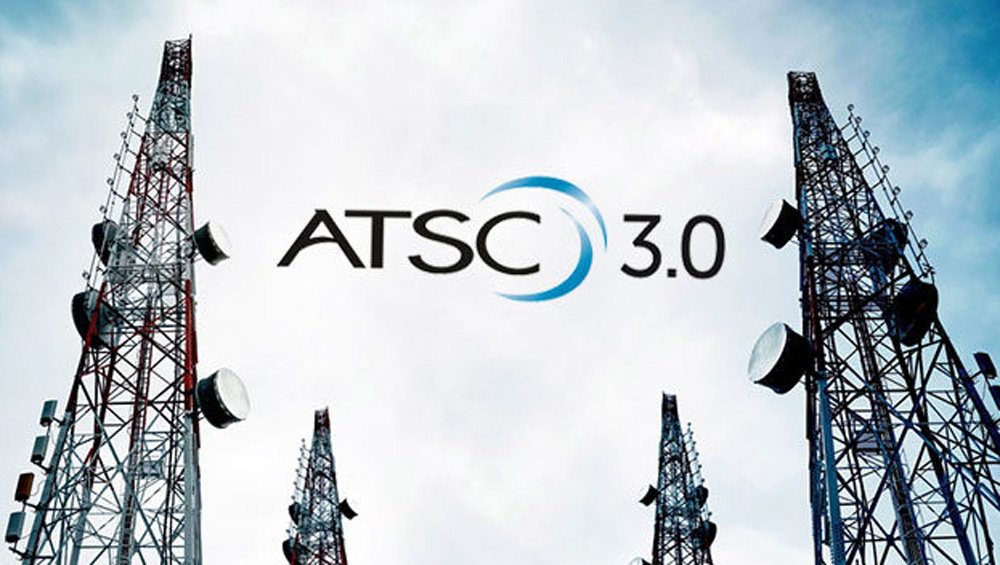
It’s Time For A Reset On NextGen TV


John Lawson
It may be time to consider a change in strategy for the ATSC 3.0 transition. Discussions with broadcasters in the heartland, senior U.S. government officials and AWARN Alliance members have crystalized questions about the viability of the current approach.
Together with the NAB’s letter to FCC Chairwoman Rosenworcel over a year ago, describing the transition as “stalled,” it may be time to go back to the future and consider a different approach.
Same Unease With Local Broadcasters And The FCC
I had a revealing conversation about the NextGen TV transition at the Michigan Broadcast Engineering Conference in Lansing earlier this month. From a panel about public safety and ATSC 3.0, I asked the audience of chief engineers and station GMs if 3.0 deployment, from a consumer awareness and adoption standpoint, was on the right track. I prefaced this question with praise for the industry for lighting up stations that now reach 75% of U.S. TV households. But on the state of the transition, not a single hand went up for “right track,” with almost all attendees raising their hands for “wrong track.”
This unease with the pace of the NextGen TV transition echoes a frank meeting I had earlier this month with senior staff of the FCC. I was there to ask for the commission’s leadership on Advanced Emergency Information (AEI), enabled by 3.0. They said they were aware of AWARN (which I was representing) and sympathetic to our cause, but pointed out that there can be no AEI without the successful consumer adoption of NextGen TV. And they clearly have questions about the market viability of that adoption. The broadcasting industry’s position that NextGen will be solely market-driven, they said, means the promotion of it, and AEI, “is not our [FCC’s] job.”
Reports from both industry and FCC participants indicate the “Future of Television” initiative, the outcome of the NAB’s lobbying, is experiencing slow going. Halfway through a two-year process, it appears that only incremental steps are likely. The fact that AWARN was excluded from the Future of Television discussions is an indication, in my biased opinion, that the strategic scope of the discussions may be limited.
Back To The Future To Find A Proven Model
Many of us who were deeply involved in the analog-to-digital conversion of broadcast television during the 2000s know what a successful digital transition looks like. That includes many in the 3.0 industry today, as well as key policymakers in the FCC and Congress. It was an effective public-private partnership that enabled U.S. broadcasters to lead the world in DTV and HDTV and did wonders for their bottom lines.
Is it time to consider a change in strategy for the current digital transition? A new strategy for 3.0 adoption would draw upon the transition to what we now call “ATSC 1.0,” but with a couple of updates for current realities.
First, the FCC would establish a “hard date” to turn off 1.0 broadcasting. Rural areas would be phased in, but such certainty is needed for long-range planning and resource allocations.
Second, Congress would establish a new voucher program for 3.0 set-top boxes and dongles. This time, however, the subsidy program would be established in the name of public safety, for both resilient alerting in the face of climate change and national security to provide a back-up for GPS. Broadcasters would agree to carry Advanced Emergency Information, perhaps with sunset provisions for EAS, and receivers would be enabled to display AEI messages.
Key stakeholders from industry and government would work together to educate consumers about the transition with the goal of accelerating market penetration of ATSC 3 receivers. This mirrors the successful DTV Transition Coalition with more than 200 members from civil rights to business organizations.
The “lighthouse” station concept would be inverted, with one station remaining as a “nightlight” to carry 1.0 signals for a period of time, albeit in standard definition, the only requirement in current regulations.
Leading up to the hard-date, broadcasters would plan for flash cuts in selected markets, those with the lowest over-the-air TV viewing, as seem to be underway already in some rural markets.
Another feature of the analog-to-digital transition was, of course, a requirement to include ATSC receivers in new TV sets. Another straight up receiver mandate would be fiercely opposed by the consumer electronics industry.
But history is instructive. The powerful wireless industry opposed a similar requirement, from a Republican Congress and White House in 2006, to carry wireless emergency alerts (WEA). The workaround was that wireless companies could legally opt-out of WEA but had to inform consumers at the point of sale that their device would not display emergency alerts. For NextGen TV sales, such a disclaimer may affect consumer sales decisions in areas of the country prone to wildfires, earthquakes, hurricanes, tornados and floods.
Another Public-Private Partnership
These steps would basically establish another public-private partnership to get NextGen TV firmly established to the benefit of American consumers. American capitalism is replete with successful versions of this structure, including the transcontinental railroad, the satellite and DBS industries and the internet itself. The iPhone is built, in part, on the fruits of multiple federally funded R&D programs, as Mariana Mazzucato, author of The Entrepreneurial State, and others explain. These partnerships served the public interest and enabled smart companies to make vast amounts of money.
All this amounts to what I call techno-political strategy, the place on the Venn diagram where business, technology and government intersect. It may be time to decide that the market alone will not be enough to achieve broadcasters’ goals.
John M. Lawson is executive director of the Advanced Warning and Response Alliance (AWARN), but the ideas expressed are his own and do not necessarily reflect the views of AWARN.
































Comments (8)
RickA says:
March 25, 2024 at 11:33 am
What about DRM issues?
Antenna Man says:
March 25, 2024 at 11:34 am
This article fails to mention one of the major reasons ATSC 3.0 isn’t taking off – DRM encryption. The broadcast industry and trade publications like TVnewscheck.com refuse to acknowledge the elephant in the room. Thanks to DRM encryption, consumers have little choice in terms of TVs and STBs. Those that are available have limitations like requiring an internet connection that provides little incentive for someone to upgrade. In a way, it’s actually downgrading. Keep ignoring the problem. Blame everyone else. See what happens.
TVChief says:
March 25, 2024 at 11:39 am
Where will the money come from to pay for the converter boxes? In the DTV transition it came from auction funds. Right now the FCC doesn’t even have auction authority. Even then it is going to go well beyond the 2027 “review” date. There’s mass confusion and dissatisfaction with DRM that limits network gateway devices used by the handful of enthusiasts for network streaming in their homes. LG has paused putting ATSC 3.0 tuners into their sets and Samsung’s release of the D series sets don’t have ATSC 3.0 tuners that the predecessor C series had. Beyond the relatively small group of hard core cord-cutters, no one knows about NextGen/ATSC 3.0. I think the reset will be a hard one.
BeyondTheBeltway says:
March 25, 2024 at 12:29 pm
3.0 is a solution that is looking for a problem that has already been solved by high speed wireless. Consumers don’t really give a hoot. Broadcast TV is a terrible waste of spectrum. We don’t need 75 stations in a local market just for public safety purposes. Regulatory capture can no longer guarantee a license to print money for broadcasters. That train has left the technological station. (pardon the pun)
jcrollman says:
March 26, 2024 at 10:22 pm
I honestly don’t think DRM is the problem either. Even if everything was in-the-clear, it wouldn’t move the needle of public interest one bit. The root cause of the stalled adoption is that broadcasters are trying to get consumers to care about ATSC 3.0 without actually giving them a reason to care. From a consumer standpoint, ATSC 1.0 was a demonstrably better version of a media channel almost everyone consumed on a daily basis. ATSC 3.0 is an imperceptible technological update to a media channel few people use anymore.
Alex Smith says:
March 27, 2024 at 8:08 am
DRM is already stopping early adopters from using it, which can’t be helping matters. If people are going to be locked out of broadcast TV, as many currently are with ATSC3, why wouldn’t they want to just stick with ATSC1, or just say that we’re wasting bandwidth and need to do away with broadcast TV entirely?
Alex Smith says:
March 27, 2024 at 8:11 am
DRM is already stopping early supporters from using ATSC3, making it useless for them. If users are going to be locked out of using ATSC3, why wouldn’t they fight against the transition or even advocate for broadcast TV to be removed entirely to free up the spectrum?
Antenna User 4 Life says:
March 30, 2024 at 4:02 pm
Thank you Antenna Man for being the voice of consumers.
These media companies want the government to force their DRM down our throats. That is the wrong approach. OTA TV is dieing and they want to drive it into a wall. OTA is used by cord cutters but it is also used in rural America. In rural America cable is not available and internet options are sparse and limited. Many rural ISP have bandwidth caps and are much slower. If you take my bandwidth up with your crappy DRM, you are consuming my finite resources and killing my ability to use a DVR.
You want a successful roll out? Provide more features! Not fewer.
You want people to watch ads? Improve the quality of ads. TV executives forget that the rise in DVRs was a response to the number of ads per 30 minute show doubling. Watch an old TV show on TV and then on a streaming service and you will see what they cut. People watch super bowl ads. Why? They are new, high quality and entertaining. Watching the same horribly long drug ad over and over for no reason is wasteful, pointless and a horrible user experience. Targeted, high quality and entertaining ads could be a game changer in TV.
Learn from the way streaming is failing. Streaming is introducing more costs and more ads. Piracy is going up. When it was just Netflix piracy was on the decline. Why? No ads and a simple affordable cost structure.
When you make things worse for the consumers they fight back.